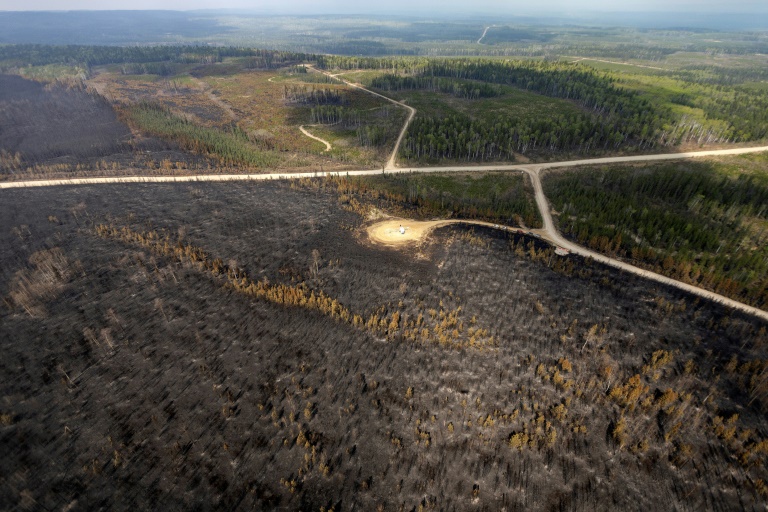KEY POINTS
- Some 478,000 hectares have so far been affected by the wildfires
- Canada has been seeking foreign aid to help fight the fires
- The fires have impacted visibility and air quality, prompting health concerns
Wildfires have been raging on in Canada of late, affecting air quality in various places. Satellite images show the smoke filling North American skies.
Some 478,000 hectares (1,800 square miles) were affected by the fires in Canada as of Tuesday, which was 10 times higher than usual for this time of the year, according to NASA Earth Observatory.
Data from Canadian authorities show the current situation compared to the 10-year average.
In an image shared by the agency, one can see thick smoke from the fires blanketing parts of North America. Taken by the GOES-18 satellite Monday, it shows the smoke covering parts of southern Canada and the U.S.
As of May 16, fires have scorched 478,000 hectares (1,800 square miles) in southern Canada – 10-times the average area burned for this time of year.@noaa‘s GOES-18 satellite captured smoke from the fires over Canada and the U.S. on May 15, 2023. https://t.co/gi9EQqmqIL pic.twitter.com/IRCZNqhVBG
— NASA Earth (@NASAEarth) May 17, 2023
The agency shared another image of the multiple fires burning in Canada earlier this month, which also showed thick smoke billowing from them. The image was captured on May 6 by the Terra satellite.
Some of the fires are “out of control” now. Thousands of firefighters and even army forces have been battling the fires, but the situation remained dire.
The situation in the hard-hit Alberta province remains “very significant and dangerous,” said Canada’s Safety Minister Bill Blair. Authorities have been seeking foreign aid, calling on countries like the U.S., Mexico, Australia and New Zealand for help in fighting the fires.
But it’s not just the devastating fires that remain problematic, as the resulting smoke may also pose risks. Visibility and air quality in several cities have been affected, with places like Calgary seeing skies with an orange hue. In Saskatchewan, residents have reported waking up to hazy skies and the smell of smoke.
Some cities in Alberta have “high” or “very high risk” air quality conditions. The air quality in the region was even among the worst in the world at certain points of the day Tuesday, reported The Weather Network.
The smoke also came down to Maryland, giving the Sun a “milky” appearance on May 10 and on Tuesday, it affected air quality in North Dakota and northern Minnesota, said NASA Earth Observatory.
Wildfire smoke is no simple matter. Apart from affecting visibility, it can impact the eyes and irritate the respiratory system. It may even aggravate conditions like chronic heart and lung diseases, according to the U.S. Centers for Disease Control and Prevention (CDC).
This is because other than gases, wildfire smoke is also comprised of fine particles from the burning materials like vegetation and building materials.
“Even someone who is healthy can get sick if there is enough smoke in the air,” the CDC noted. “Breathing in smoke can have immediate health effects.”
This includes symptoms like having trouble breathing, irritated sinuses, headache, an asthma attack, fast heartbeat and chest pain.
People should be on the lookout for air quality reports and follow precautions. They should stay indoors if advised, and shouldn’t add to indoor pollution, for instance by using the fireplace or lighting candles. Vacuuming also isn’t advised as it may only stir up the particles that are already in the home.







